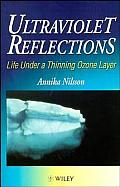The critical use exemption process was created to provide relief to methyl bromide users who do not yet have any technically or economically feasible alternatives. Under the current structure of the Montreal Protocol, the Parties to the treaty authorize exemptions on an annual basis, and each year EPA promulgates a rule to allocate methyl bromide for critical uses. Methyl bromide allocations are regulated and monitored by EPA.
At the 18th Meeting of the Parties to the Montreal Protocol in New Delhi, India, last week, the United States was authorized 91 percent of its request for critical use allocations of methyl bromide for the year 2008. As inventories of ozone-damaging methyl bromide continue to decline, critical use exemptions supposedly help meet the needs of American farmers as they transition to ozone-safe alternatives.
The amount authorized at the New Delhi meeting represents 21 percent of the nation's 1991 baseline consumption (U.S. baseline is 25,528 metric tons). Some 18 percent of baseline (4,595 metric tons) will be authorized new production and import, and the remainder will come from pre-phaseout inventories. The EPA decides who gets to use it, and how much.
As methyl bromide alternatives have been adopted and uses scaled back, the quantity of the critical use exemption in the United States has decreased steadily -- the authorizations have decreased from 9,553 metric tons for 2005 to 8,082 metric tons for 2006 and 6,749 metric tons for 2007. The authorization for 2008 continues the downward trend. The level of pre-phaseout inventory has also continued to decrease -- from approximately 16,422 metric tons in 2003 to 12,994 metric tons in 2004 and 9,975 metric tons last year.
More Information/Allegations of EPA Negligence:
Transcript of the Public Hearing on the Proposed 2007 Methyl Bromide Critical Use Exemption Rule: Testimony by Mr. Peter Joyce, CEO -of Value Recovery, Inc. - which has developed a technology for removal and destruction of methyl bromide - given at EPA's headquarters stating that the agency has been negligent in doing all it can to prevent emissions and indicating how this negligence plays into the hands of the major players.
Educate Yourself Further
 Ultraviolet Reflections: Life Under a Thinning Ozone Layer
Ultraviolet Reflections: Life Under a Thinning Ozone Layerby Annika Nilsson
No comments:
Post a Comment